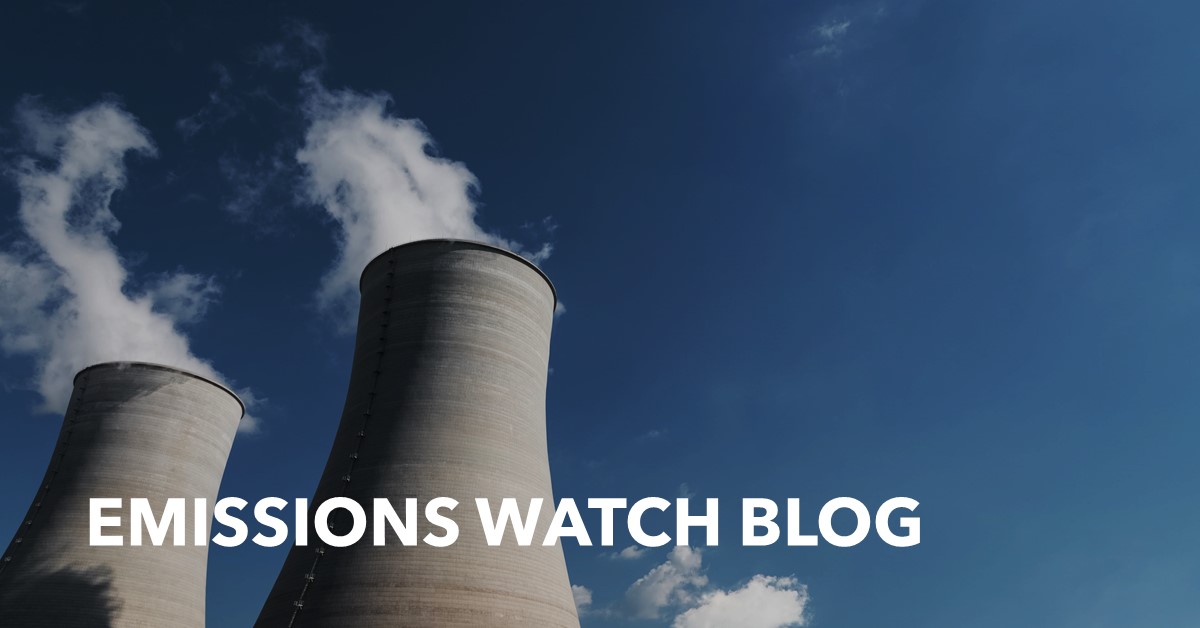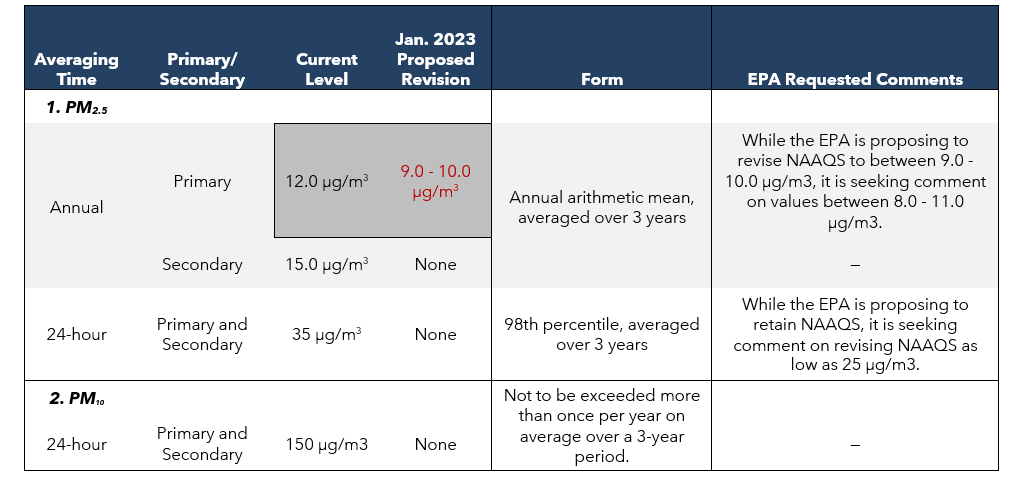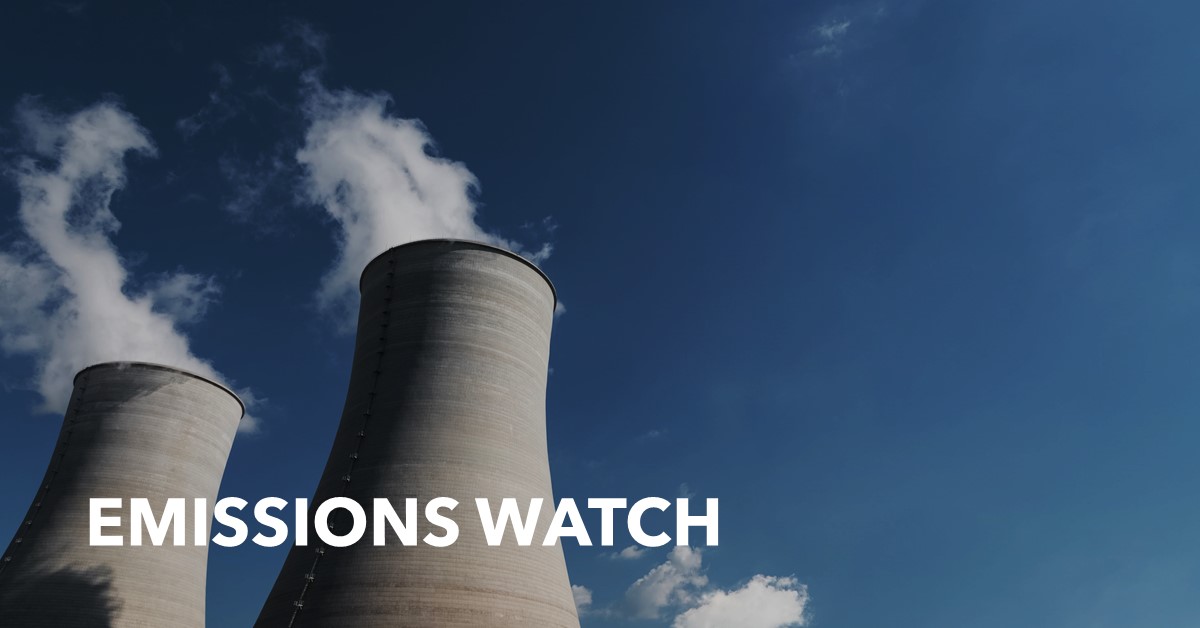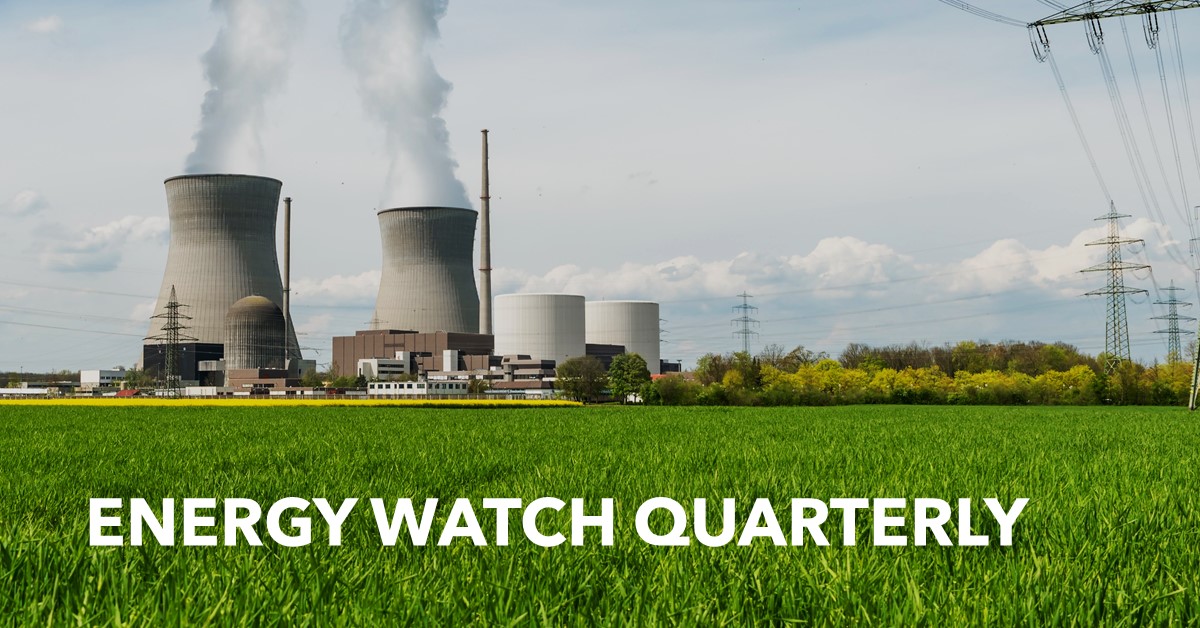PM2.5 and NAAQS Update | Emissions Watch Blog
EPA Proposed rule on NAAQS for Particulate Matter 2.5
On January 6, 2023, the U.S. Environmental Protection Agency (EPA) issued a proposed rule to strengthen the primary (health-based) annual National Ambient Air Quality Standards (NAAQS) for fine particle pollution, or soot (PM2.5).
Specifically, the EPA is proposing to revise the primary annual standard from 12.0 µg/m3 to a value within the range of 9.0 and 10.0 µg/m3. Since a lower PM2.5 NAAQS will require emission reductions across multiple sectors, there will likely be implications for some plant owners located in to be designated nonattainment areas.
Current PM NAAQS vs. Jan 2023 Proposed Revisions
Implications for power plant owners and developers
As outlined in ESAI’s Emissions WatchTM, when NAAQS are strengthened, there are several potential implications for plant owners and developers. For example, plant developers may face more rigorous permitting requirements when seeking to construct fossil fuel-fired plants located in areas that the EPA determines are not in attainment with the revised NAAQS. These more rigorous permitting requirements also apply to existing plants for which the owner is seeking modifications (i.e., uprates) that will lead to an increase in emissions.
The EPA will issue its final rule in Q3 2023. Following the issuance of this final rule, the EPA will issue nonattainment designations within two years. Then, eighteen months following the effective dates of the nonattainment designations, states must submit final nonattainment State Implementation Plans (SIPs) detailing their strategies to attain the NAAQS.
If the EPA approves all or part of a SIP, those control measures are enforceable in federal court. If a state does not submit an approvable plan or if the agency disapproves a plan, the EPA is required to develop a federal implementation plan (FIP). An example of a FIP to address previous PM2.5 NAAQS is the Cross State Air Pollution Rule.
Carbon, RECs, Capacity and Power Price Forecasts
ESAI provides detailed analysis of the Carbon Emissions markets, including an allowance price forecast, emissions projections, updates on relevant policy and regulatory developments, and how they impact the supply / demand balance in the wholesale power markets. Our Long-Term price forecasts include Capacity, Power, Natural Gas, Renewable Energy Credits, and Carbon prices. These are available as part of our Quarterly Power Service.
For more information on how to access this information, contact Brian Doyle at [email protected].
Learn About Emissions Watch
The Emissions WatchTM quarterly publication contains ESAI Power’s outlooks and views on the emissions markets. ESAI provides regular updates and analysis on developments in the SO2, NOx and CO2 emissions markets as well as price forecasts for state and regional markets. In addition, regular updates are provided on the RGGI program as well as other state-specific emissions programs.
Learn About Energy Watch Quarterly
Energy Watch QuarterlyTM provides a quarterly analysis of market and policy issues affecting energy pricing dynamics over the next 10-year period for both the power and natural gas sectors. This analysis includes forecasts of pool-wide and zonal energy prices in New England, New York, and PJM, including forecasts of fuel inputs. Supporting assumptions are provided in each quarterly report.
Contact Us
Please contact us for more information about our research product publications or our consulting services.






